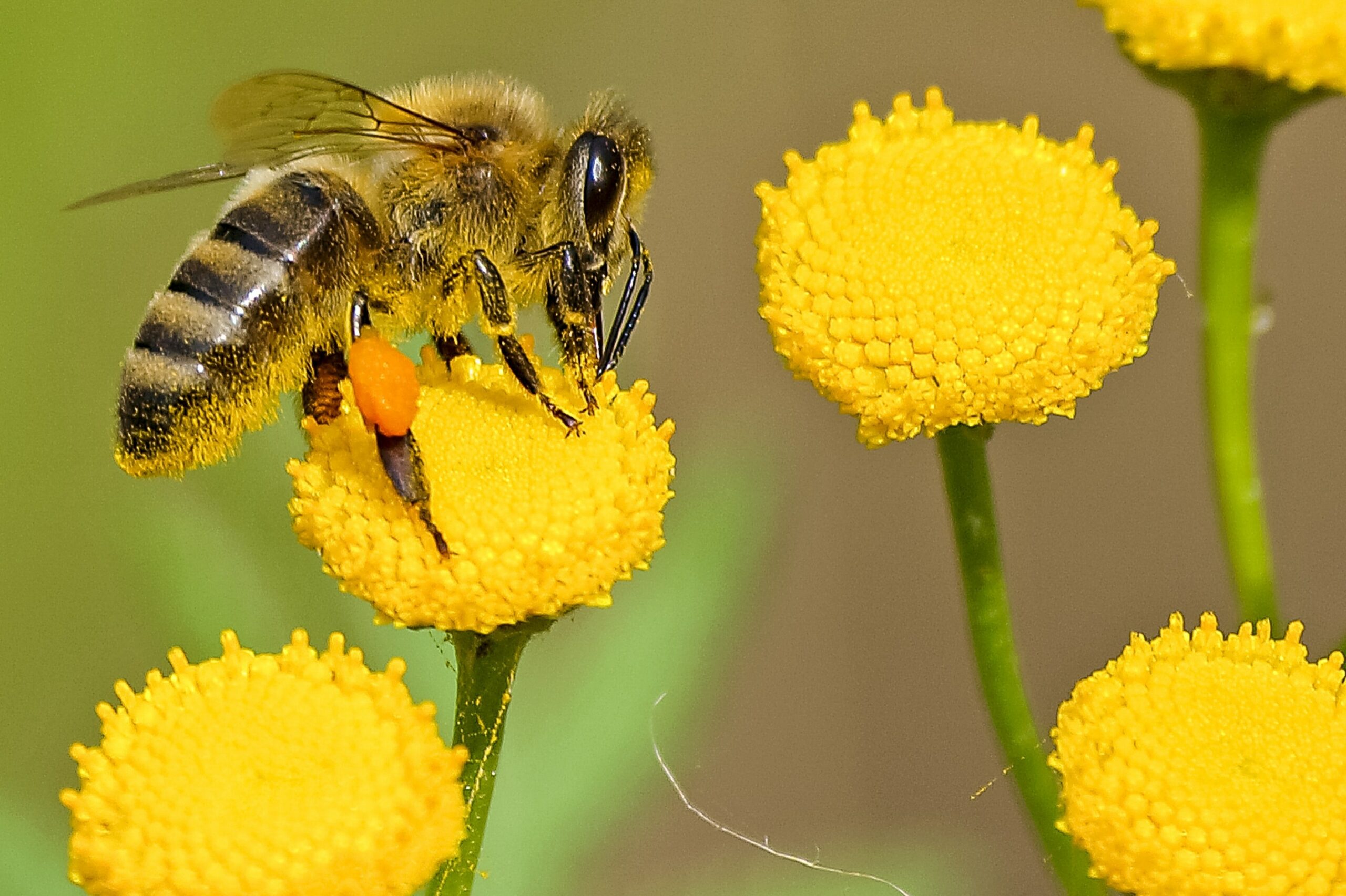More than 500 species of bees can be found in Illinois

JACKSONVILLE, Ill. — Now that May has arrived, many landscapes are full of blooming plants and the buzz of bees.
When you mention bees to most people, images of golden-yellow honey bees come to mind. However, there is a lot more to bees than honey bees. In fact, there are over 20,000 bee species worldwide and around 500 species of bees native to Illinois.
While honey bees live in colonies that can reach 60,000 individuals and bumble bees live in colonies that can reach 400 individuals, 90 percent of our native bees are solitary bees. Unlike honey and bumble bees that have a division of labor, solitary female bees do all jobs by themselves.
Seventy percent of our native solitary bees nest in the ground. Once a female selects a location, she creates nest cells. Inside these cells, she will place a ball of pollen mixed with nectar and lay an egg on it. When the egg hatches, the larva will feed on the pollen ball. Generally, these bees will not emerge until the following year.
Some of the more common native bees in Illinois are:
Bumble bees: Bumble bees get their name due to the buzz they produce while collecting pollen. They are social insects, and colonies can have 50-400 individuals. Colonies will die off at the end of summer, and mated queens will hibernate. They are cavity nesters and are active from spring through late fall.They are large bees that are hairy with yellow, black, white, brown, or orange bands.
Eastern carpenter bee: Eastern carpenter bees are commonly considered pests because they often construct nests in the wood of homes and other buildings (painting wood can prevent this). They are active from spring through fall. Due to their large size,they primarily visit large and open-faced flowers. They look similar to bumble bees. However, they are larger, and the top of their abdomens are bare, black, and shiny.
Leafcutter bees: These bees cut pieces of leaves or petals to line the walls of their nests. They are solitary nesting and create their nests in pre-existing wood and other plant cavities. Leafcutter bees are active from early to late summer. They are medium to large bees, with smoky colored stout bodies with pale bands on their abdomen.
Sweat bees: Many species are attracted to human sweat that they will consume for its salt, thus their common name. Most sweat bees nest in the ground. Sweat bees can be found from spring through fall, with most species being active during the summer. They are small to medium-sized bees and are often brightly colored and metallic, with colors ranging from green to red and yellow.
Other native bees include yellowfaced bees, mason bees, small carpenter bees, longhorned bees, mining bees, cellophane bees, and squash bees.
Like honey bees, native bees are also important pollinators. In many cases, they are more effective and efficient pollinators compared to honey bees, especially when it comes to native plants.
So take a moment to stop to enjoy our native bees.
Good Growing Tip of the Week: Native bees are generally much more reluctant to sting when compared to honey bees and wasps, often only stinging when squished or handled.
Miss Clipping Out Stories to Save for Later?
Click the Purchase Story button below to order a print of this story. We will print it for you on matte photo paper to keep forever.

